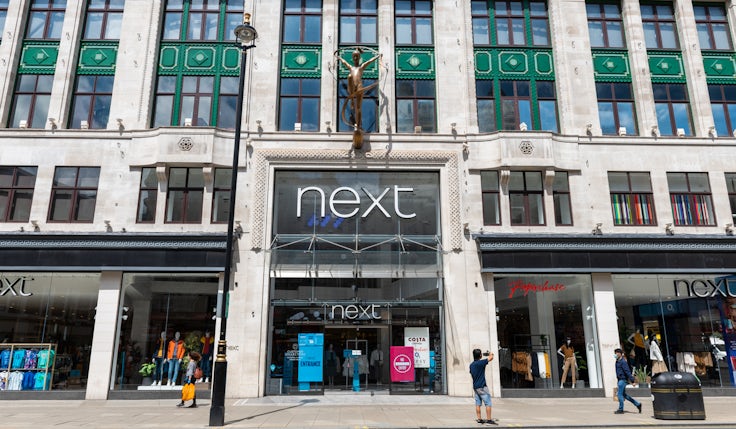The best way to get buy-in for investment? Remove every reason to say no
For those facing tricky budget negotiations or trying to get innovation green-lit there’s no silver bullet to success, but there is plenty you can do to maximise the chance of sign-off.

Have you ever had a big idea? Or tried to get that big budget request approved? I am sure you have. It’s often the sign off that’s actually the hard part.
A few years ago I was working at Britvic on an idea to completely change how the company approached launching new brands, and how it manages its small brands. Rather than trying to compete alongside the big brands for resource I proposed a separate team that would be independent of the main organisation and act like a startup.
After months creating the business case, I was ready to present to the board. The presentation went quicker than expected and there had been no questions. The CEO looked around the room, asked if there were any objections before looking me straight in the eye and said: “Congratulations, your proposal is approved and I have every confidence it will be an enormous success”. My excitement was soon replaced by an overwhelming sense of fear that I now had to actually deliver what I sold to them.
The reaction from my colleagues was interesting. Many congratulated me on getting the project signed off but not everyone was complimentary. A few people commented that I hadn’t been the first person to come up with the idea. They were right. In fact an idea like mine had been presented to the board on seven different occasions in the past eight years. But mine was the only one that had gotten sign-off.
Why did my idea get green-lit when the others didn’t?
‘Everyone’s got an opinion’: Cautionary tales from the budgeting and planning frontline
Find the win-win
I had gotten the idea while on a management training course. The facilitator had shared a simple Venn diagram with two overlapping circles, one contained details of everything you are passionate about and the other with the largest problems the company was facing. The task was to find the overlap in the middle. This was easy for me, I was passionate about innovation and believed the company had got too big to manage small brands.
I believed I was the right person to do this and that my belief and energy was critical in driving it through from idea to reality.
Present the solution, not the problem
Articulating the problem was fairly simple. It’s well known many companies fail to make innovation work. Knowing it and solving it, even harder. External inspiration is so important. Clayton Christensen’s book, The Innovators Dilemma, documents the challenge very well and Adam Morgan’s, The Pirate Inside shows the kind of approach that works. I also studied recent case studies of competitors and how they resourced innovation to make it work. So far so good.
But I was working in an unusual organisation. The brands I wanted to manage were owned by three different entities with different commercial agreements in place. This led to a rather tricky challenge of aligning different organisations around a single goal, a kind of win-win-win. Understanding the incentives of each was critical in being able to find a solution that would tick every box.
We rarely ever quantify the cost of doing nothing but it can really focus the mind.
I then had to show exactly what I was asking for. To do this I aligned everyone to the principles first and the structure second. I had to make sure that everyone understood why we were doing this and how we would go about it. Then when I shared the structure of the proposal with a full breakdown of overhead and brand investment it made complete sense. I also redeployed existing resources to demonstrate there would be no impact on overall spend, and therefore we could focus on what would make the brands succeed.
Marketers on how to stop budgets becoming ‘a self-fulfilling prophecy’
Treat it like an election campaign
One very helpful piece of advice I was given early on was to create a ‘stakeholder map’ that shows every person required to support the proposal based on their level of influence and whether they would be for or against the proposal. Neatly, this ends up as a four box matrix. I then worked through each person on the map focusing on the influential people most likely to say ‘no’.
Remove every reason to say no
One question I asked the CEO early on in the process was simply: “What will it take to get this approved”. He answered: “Just remove every reason to say no”. Perhaps in my naivety, I took this quite literally and in every stakeholder interview I asked for a list of reasons why they might say no. I wrote up that list with a counterargument for every point. This was the starting point for my final board presentation. Brave, perhaps, but it really did cut down the meeting time and led to agreement around the table.
Timing is everything
Some of those smarting from their own failure to get the green light for the idea suggested the timing was lucky. To an extent, I agree, but you have to work hard to be lucky. You can also be clever about the timing. In my presentation, I had clearly explained why now was the right time to do this and what the risk of doing nothing would be. We rarely ever quantify the cost of doing nothing but it can really focus the mind.
It’s also worth knowing what’s occupying the time and mind of the people making the decision. Often a proposal is rejected because it’s a bad proposal but also because there is something more important competing for attention. This happened to me a few years later when I took another proposal to the board only for it to be rejected because the company was embroiled in a major product recall.
But even that rejection resulted in my jump into a management buy out, so even if you don’t get your idea signed off or that budget approved it may be the springboard for even better things.
Just make sure you have given it everything and leave no reason for anyone to say no.






